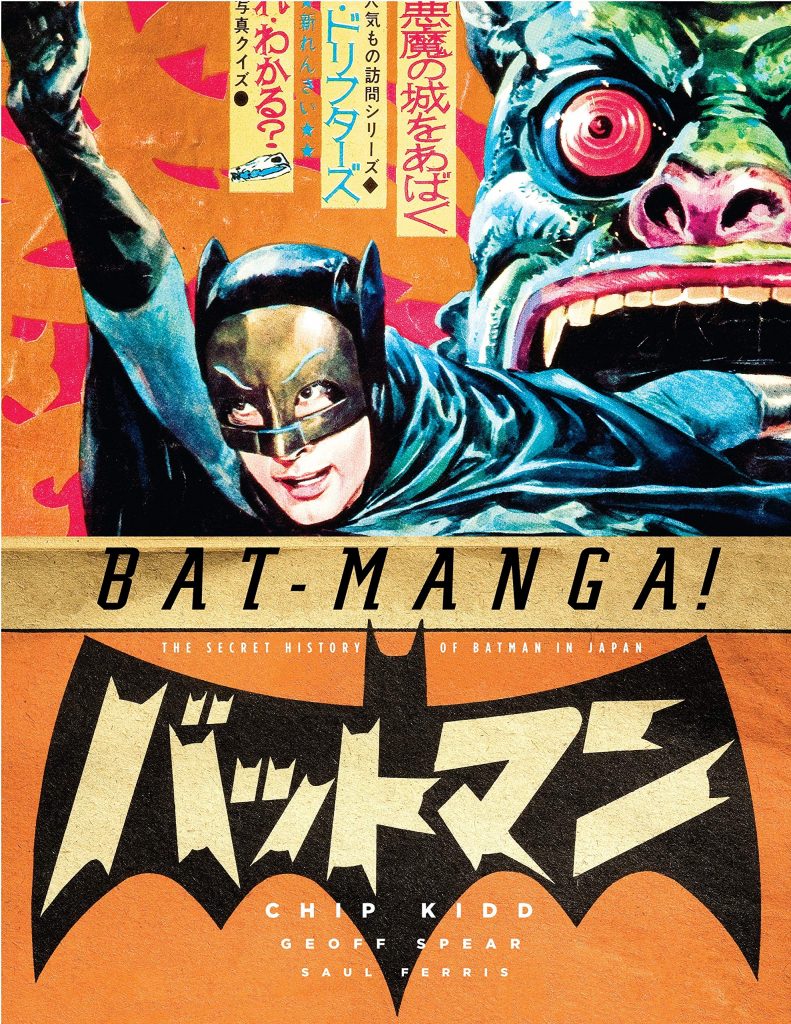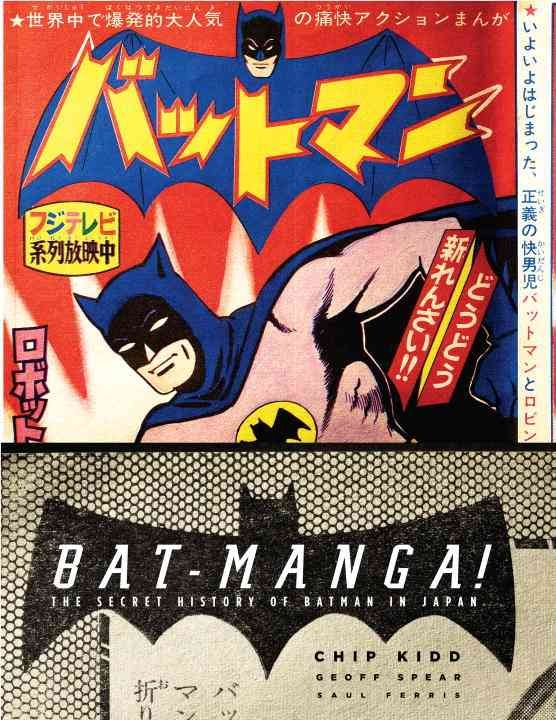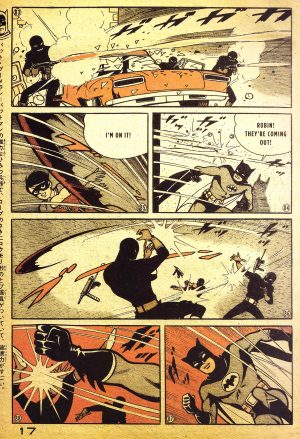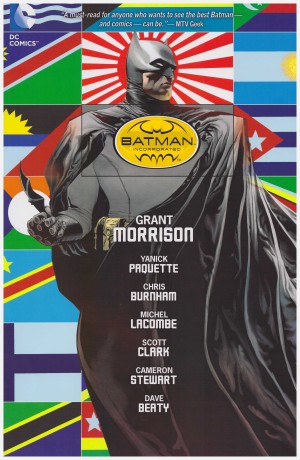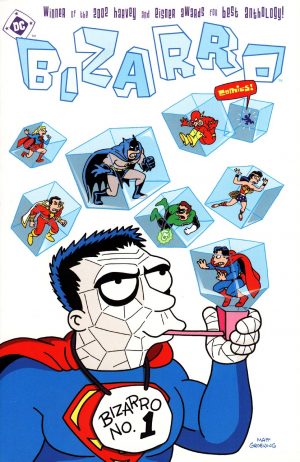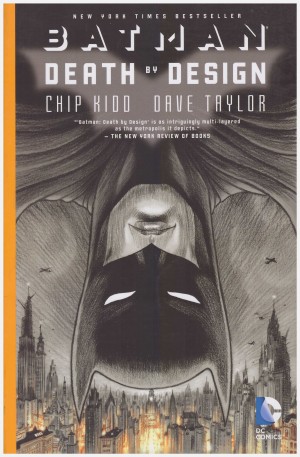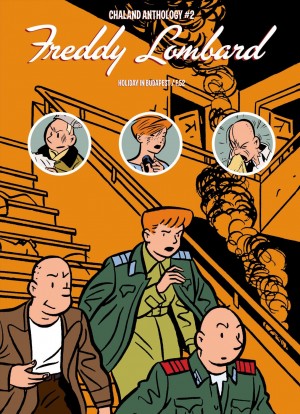Review by Frank Plowright
Before Chip Kidd’s 2008 revelation, few outside Japan realised that a Batman manga strip was created by Jiro Kuwata to coincide with the height of the Batman TV series’ popularity. The question now is whether with DC having reprinted the complete run over three volumes from 2014, Bat-Manga remains an essential purchase. That depends on whether or not you feel a complete run is essential or whether just a flavour will do, and how much you appreciate Kidd’s design skills, contenxtualising and enthusiasm.
Kuwata’s stories were originally serialised in bulky collections published weekly, and Kidd revels in the pulp quality. Although Bat-Manga’s pages are gloss, Kidd’s presentation is true to the original publication. Such is the quality of reproduction that the wood fibres of the paper, and the bleed through from reverse pages are visible. It’s a very different presentation from the traditional black and white reproduction selected by DC for their volumes.
At the time of publication Kidd didn’t have access to all 53 chapters of Kuwata’s Batman, so only two stories are complete, one featuring the nutty Lord Death Man, who cannot die, and the other a scientist concerned he’ll mutate into something to threaten humanity. Both are fine examples of Kuwata’s skill and imagination. He was supplied with a bunch of 1960s DC comics, and at first attempted to mimic the style, but over time only Batman himself resembled the standard look, although the Weather Wizard, recast as Go-Go the Magician, is a pretty direct copy. Kuwata found it simpler to draw everything else in his own style, a neat approximation of the look originated by Osamu Tezuka that defined the Japanese children’s comics of the era.
However, for all the spirit and imagination, Kuwata’s strips are much of a muchness, mad scientists a recurring theme, so is a three volume complete collection really necessary? That’s equally applicable to numerous other superhero collections, of course.
There is an additional benefit to this volume. Kidd loves ephemeral culture, so as well as the strips, the pages are packed with assorted posters, toys and other tie-ins released in Japan to coincide with the TV series. They’re works of art in themselves, Batman motifs on fantastically designed tin ray guns, some designs exploiting Adam Ward’s portrayal, others way off message, but equally intriguing. There’s a board game, and the posters are sumptuously illustrated, and all the more exotic for being plastered with Japanese writing. There’s also a brief interview with Kuwata, including the astonishing revelation that he became a professional at thirteen.
Bat-Manga is a lovingly curated package where elements beyond the stories raise the overall desirability and despite a complete run of Kuwata’s Batman now being available, this is still the volume to have.
